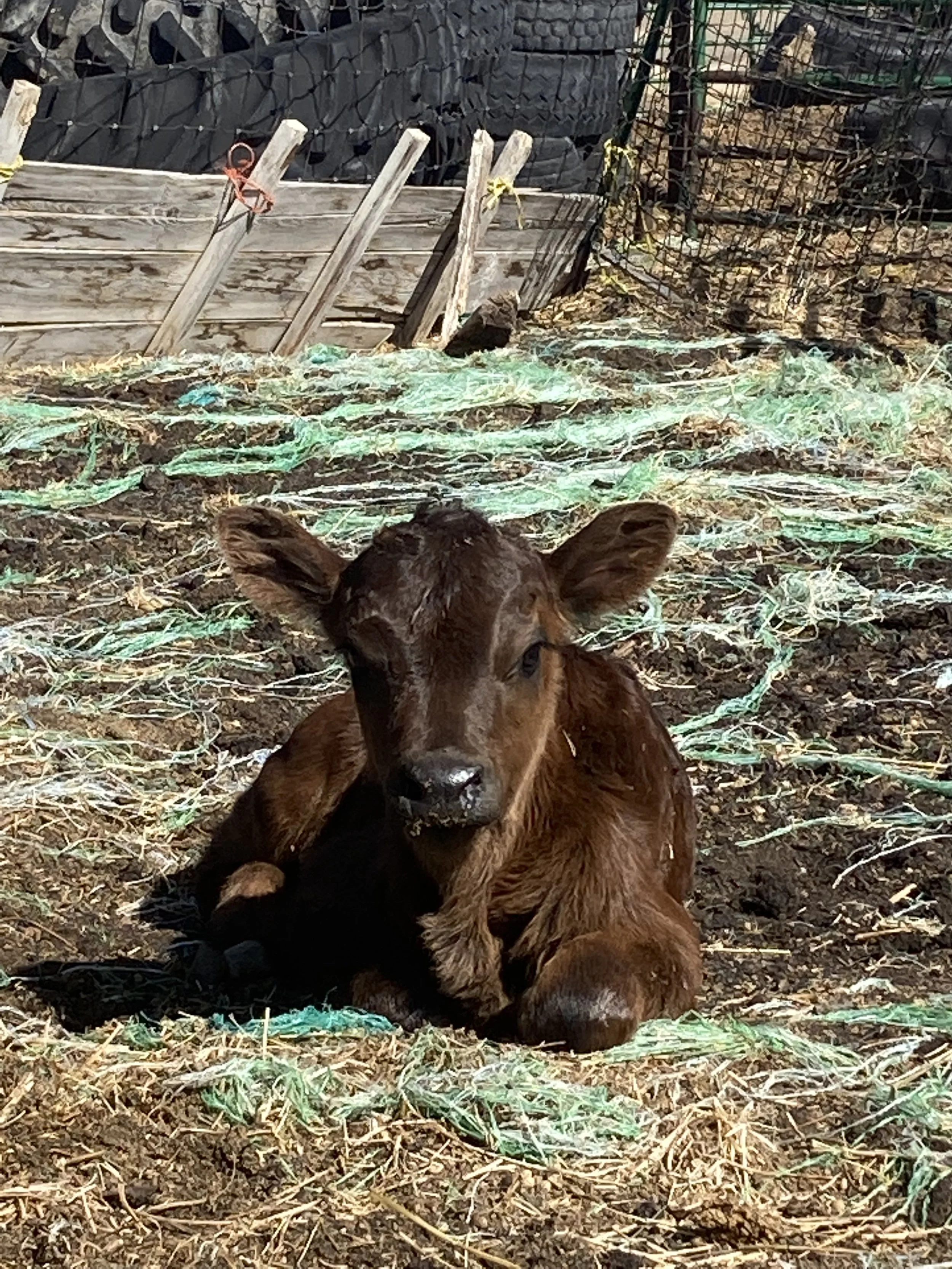Maija's Race
My milk cow, Maija, opens her mouth wide, stretches her neck, and makes a beeline for pellets in my pocket.
Maija is not shy about expressing her desires.
She makes me laugh, is the most profitable cow on the ranch and my biggest recurring time comitment.
Maija feeds multiple orphan lambs each spring, saving me from purchasing numerous bags of $70 lamb milk replacer. My kitchen is still a war zone, but instead of tripping over bags of expensive powdered lamb food, I have large bowls of thawing milk on my counters.
Maija will raise her own calf plus another calf, too, if I have one.
She doesn’t adopt orphans willingly so I walk her into the squeeze chute each morning and night.
When my jar of her milk gets low, I steal some for myself, knowing that about a third of my take will be in thick, rich cream – oh, that cream! -- and I won’t need to spend $75 on splurges at the grocery store when I stop by for a gallon of milk.
Maija has been a part of the ranch for many years. I have to think long and hard before remembering when I bought her in 2015.
I wonder how she can age so much while I don’t.
Maija spends most of her life in the corral so I have easy access, but this winter she was free to roam the pasture with my beef cows.
After all, everyone needs to live wild and free sometimes.
I planned to bring her back to the corral in May when I expected her to calve.
The other day, Maija had a new calf by her side.
Apparently, that bull I left in the corral last June must have seen something in Maija’s wide hips, deep belly and fine horns.
I walked Maija three-quarters of a mile to the corral, knowing I had my work cut out for myself.
Maija’s udder told the familiar story of raging mastitis.
For past five years, my vet has tried to convince me to sell Maija to McDonald’s and buy a new milk cow. He doesn’t know how hard it is to find a friendly, productive, high-cream content cow.
I can’t just drop by Walmart and load one into my trailer.
In the past, I have tried to get a jump on this infection by pumping Maija full of penicillin before she calved.
This time, I need to chase after the mastitis.
Maija is lethargic in the corral.
Her udder is hard and tight.
I’m not sure I can beat the bacteria this time.
Maija doesn’t like needles and she lets me know.
I cajole her with grain.
In a pout, she ignores it.
I relieve her tight udder.
In her pain, she kicks at my hand.
Meanwhile, Maija’s calf needs healthy colostrum.
I thaw some that I saved a few years ago.
The calf lays in the corner listlessly.
We name her Sharon, after a delightful, strong life-force, even though some people might not consider it a complement to have a heifer as a namesake.
My apprentice, Hannah, catches the calf and I force a bottle nipple between Sharon’s lips. Colostrum runs out her mouth.
Sharon barely sucks and she certainly won’t swallow.
I bring out the calf tuber.
Sharon’s tummy fills.
The next four days become a full-scale war against mastitis bacteria.
Hannah and I milk Maija three times each day.
We give penicillin injections and insert medicine into each quarter.
Maija fights my needles harder, shaking her head and twisting in the chute.
Then, her udder softens.
We teach Sharon how to find a teat.
Sharon jumps and bucks in the warm sunshine.
I might win this race after all.
